|
Newly created legislative panel will track federal money coming into New Mexico BY: AUSTIN FISHER - APRIL 29, 2025 12:16 PM Courtesy of Source NM New Mexico lawmakers this week rolled out a plan to help prepare for potential hefty reductions in federal funding.
The Legislative Council, the group of state representatives and senators that oversees all lawmaking between New Mexico’s legislative sessions, voted unanimously Monday afternoon at its first meeting following this year’s session to create a new panel called the Federal Infrastructure Funds and Stability Interim Committee. House Speaker Javier Martínez and Senate President Pro Tem Mimi Stewart, both Albuquerque Democrats, told Source NM after the meeting that the committee, in a nutshell, will examine potential federal funding cuts and consider ways to adapt to them if they become real. For example, the committee will look at proposals to cut funding to Head Start, a child care and early education program. This week, U.S. Sens. Martin Heinrich and Ben Ray Luján (D-N.M.) joined 40 other senators in a letter to U.S. Department of Health and Human Services Secretary Robert F. Kennedy, Jr. demanding he immediately unfreeze Head Start funding and reinstate early childhood education workers who have either been laid off or furloughed as result of closures of the preschools, which rely on federal funding. Similarly, the new legislative committee will track funds for Medicaid, the safety-net health insurance program for people with low incomes, Martínez said. Gov. Michelle Lujan Grisham has said previously she might call a special session in the fall, should the state need to address federal shortcomings in programs such as Medicaid. The state also is also party to multi-state lawsuits challenging federal cuts. Its members will also consider the Trump administration’s proposal to abolish the federal Department of Education, Stewart said. Federal funding accounts for 30% of New Mexico’s education budget, she said, including money for special education. Stewart said the committee has no historical precedent in the New Mexico Legislature, noting “this is an ahistorical presidency.” The committee is intended to last for the remainder of the year, but could extend beyond that if needed, she said. Martínez told the Legislative Council the new committee will not duplicate the work being done by the Legislative Finance Committee and other legislative panels but, rather, supplement it with a “proactive approach to deal with any potential reductions in federal funding.” “It will be what I consider to be a very nuts-and-bolts committee, with a tailored, specific focus,” he said. Martínez appointed Rep. Patricia Lundstrom (D-Grants) as the panel’s co-chair from the House of Representatives, and Stewart appointed Sen. William Soules (D-Las Cruces) as the co-chair from the Senate. Lundstrom told Source NM that the new committee will “focus on making sure that no matter what happens at the federal level, New Mexico is ready.” “We will conduct an inventory of existing federal funding streams that our state relies on for infrastructure and local government operations, so that we can begin to proactively prepare for any potential federal funding cuts,” Lundstrom said in a statement. “While decisions in Washington D.C. sow confusion, state lawmakers are stepping up to protect New Mexicans’ access critical services and resource.” An attempt to reach Soules for comment through a spokesperson for the Senate majority was unsuccessful as of publication time. Other members of the new committee include Reps. Susan Herrera (D-Embudo), Raymundo Lara (D-Chamberino), Mark Duncan (R-Kirtland) and Cathrynn Brown (R-Carlsbad); and Sens. George Muñoz (D-Gallup), Linda Trujillo (D-Santa Fe), James Townsend (R-Artesia) and Minority Whip Pat Woods (R-Broadview). The panel is expected to hold an organizational meeting in May, Martínez said. This story was updated following publication to include comments from Rep. Patricia Lundstrom, and corrected to accurately reflect the appointed representatives on the new committee. Source regrets the error.
0 Comments
Democrats steer federal hearing toward cuts BY: PATRICK LOHMANN - APRIL 29, 2025 Courtesy of Source NM WASHINGTON — U.S. Rep. Melanie Stansbury (D-NM) on Tuesday chastised the United States Forest Service for refusing to publicly detail how staffing and other cuts could affect the federal response to wildfires expected soon in New Mexico and elsewhere. Stansbury directed her comments to Forest Service Associate Deputy Chief Ellen Shultzabarger, during the latter’s testimony to the U.S. House Federal Lands Subcommittee, on which Stansbury and fellow New Mexico Democrat Rep. Teresa Leger Fernández serve. Shultzaberger was there speaking in favor of a pair of bills that would allow specific, small pieces of federal forest land to be returned to states and cities, when questions from committee Democrats steered the conversation toward the upcoming wildfire season. “We are continuing to hire to have that goal of 11,300 operational firefighters, and we feel that we’ll be ready for the fire season,” Shultzabarger said. “With all due respect,” Stansbury responded, “I’ve been on the ground for the last couple of months, and Forest Service employees are terrified they’re going to lose their jobs, people are leaving in large numbers and thousands of people have been fired and not rehired. So while I appreciate that that is the company line here in this hearing, and I understand the position that you’re in, it’s just factually untrue. We are not prepared for this fire season.” Dozens of probationary Forest Service employees across New Mexico were fired or resigned since President Donald Trump took office. While judicial orders required the Trump administration to rehire those employees, many who tried to return were simply placed on paid administrative leave. While Forest Service officials have stressed that the mass firings were not aimed at employees whose sole job is dealing with wildfire, some outside estimates suggest three-quarters of those fired had “red cards,” meaning they could be called to help suppress a wildfire if one breaks out. A Colorado Democrat on the committee, Joe Neguse, estimated that 3,000 red card holders were fired. Meanwhile, Forest Service employees are awaiting the results of a “reduction-in-force” restructuring process that could take out another chunk of employees who are not on probationary status. Asked about Stansbury’s comments after the meeting, Shultzabarger did not answer, instead deferring to Forest Service spokesperson Kyle Earnest, who did not provide further comment.
Source New Mexico caught up with Stansbury after the hearing in Washington and asked her about the upcoming wildfire season, which forecasts predict could be dire and federal stonewalling on what used to be basic information. The following conversation took place during a short walk from the Capitol and has been edited for clarity and concision. Source: Do you have any sense at all of what we could be looking at with reduction in force in New Mexico forests, in terms of employees lost? MS: We have not received any specific plans. The New Mexico national forests have been heavily impacted by all the mass firings that have happened. The probationary firing that happened at the beginning of the DOGE effort resulted in dozens and dozens, both senior and junior, Forest Service employees, receiving notice that they’ve been fired. A lot of senior Forest Service officials did take the initial deferred departure offer, and we know that there is a RIF restructuring that is coming, but there’s been nothing released publicly, and there’s been nothing released internally. And so when I was home in New Mexico last week, during my town halls, I had Forest Service employees actually come to my town halls and speak to me privately about what’s happening. There’s a complete culture of fear. Nobody has any idea what’s going on. A lot of people are afraid they’re going to lose their jobs. …We’ve been heavily and disproportionately impacted. So we don’t have specific numbers, but we know that the entire workforce is in chaos and struggling right now. Do you know the status of the interagency wildfire dispatch centers, including the one that’s in the Cibola National Forest office, which is on the DOGE termination list? I don’t have any specific details. I mean, one of the things that I think has been really troubling about this entire DOGE exercise is that they claim that they’re doing it with transparency, and yet they refuse to come testify in front of Congress. They don’t even send political appointees to testify. Today, they sent a career staffer rather than a political appointee. And they transmit no information to congressional offices. And, you know, I say this all the time, but this is not normal. In past administrations, regardless of what side of the aisle you are on, it has always been the norm and the practice that if you’re going to make a major change to a district, you notify the congressional offices, you notify the local officials, you notify towns and counties in the state, because all of them are impacted, and there’s zero communication at all between the administration DOG and local authorities, so we have no idea what they’re doing. Do you think we’ll learn more in the president’s budget to be released this week about how those cuts will affect the New Mexico forests? I don’t know. The word on the street is that the budget that will be transmitted this week is what they’re calling a skinny budget. So it will say, you know, [the] Forest Service’s budget is XYZ. It’s cut by XYZ amount and these programs, but I doubt it’ll have the level of detail that you see in a more fully fledged budget, where it describes in detail what their plans are. We ran into New Mexico State Forester Laura McCarthy near the Capitol, who told us she was here ‘lobbying’ but would not say for what bill or issue. Do you know? She’s here? Wow, OK, I’m going to text her. I’m very good friends with Laura. My background is in water resources management, and she and I collaborated a lot on forest and water management in previous lives. So no, I don’t know what she’s up to here. But what I can say in general is that both states and tribes have been heavily impacted by the funding freezes. In fact, just yesterday, Mescalero Apache had a huge forest greenhouse project that had been on hold since the beginning of the Trump administration because they had frozen a [Bureau of Indian Affairs] grant they had received, and it was critical to growing seedlings for reforestation after these big fires, and they just found out yesterday that it had gotten unfrozen. So my guess is that the states and tribes and local authorities are trying to track down grants and federal funding. I think folks are very, very concerned about the upcoming fire season, as I mentioned in the hearing. We have the lowest snow pack in recorded history. And the thing to understand about that is it means that both the river is drying up already, which is unseasonably early, but it also means soil moisture and vegetation moisture is very low, which means basically the entire state’s a tinder box for the fire season. So if and when fires hit us, we’re at a very, very, extremely high risk for a really catastrophic fire season. And as you know, our communities are still reeling and recovering from the last major fires, and we can’t do it without support from the Forest Service, FEMA and these programs that they’re talking about cutting. It’s a bad situation. The Cibola Forest has recently listed a couple of uranium mines near Mount Taylor as priority projects. Do you think those uranium mines could become operational? Well, this administration is absolutely moving forward with stripping away protections for permitting and for national forests. They just issued guidance last week that would reduce all federal permitting to 28 days. In the case of, for example, Mount Taylor — which is not only set aside as national tourist land, but it’s also a sacred site for the pueblos and tribes of New Mexico — you can’t do an environmental and cultural review in 28 days. That’s just going to result in lawsuits. I believe that the administration is going to do everything it can to green-light mining and extractive activities on sensitive lands, and we will fight them every step of the way. Courtesy of the U.S. Department of Agriculture Forest Service The purpose of this Order is to provide for the public's health and safety and to protect National Forest System lands, resources, and facilities during the current period of high fire danger. An emergency exists due to extreme hot and dry weather conditions, as indicated by current fire danger indices. These factors have created an environment in which ignitions from human-caused activities can occur at a much higher rate than normal. Further, wildfires from such ignitions have the propensity to spread extremely quickly, presenting a significant risk to the public safety and substantial obstacles to firefighters in the implementation of wildfire suppression strategies. Alert Start Date: May 4th, 2025 Alert End Date: September 30th, 2025 Order Number: 03-10-00-25-05 Associated Documents Emergency Stage 1 Fire Restrictions Order Forest Order PROHIBITIONS Pursuant to 16 U.S.C § 551 and 36 C.F.R. § 261.50(a), the following are prohibited on all National Forest System lands (NFS) in the Santa Fe National Forest, Sandoval, Los Alamos, Santa Fe, Rio Arriba, Mora and San Miguel counties, State of New Mexico, described below and depicted on the attached map incorporated into this Order as Exhibit A (the "Described Area"): 1. Building, maintaining, or using a fire, including charcoal and briquettes outside a fire structure that is provided by the Forest Service within a designated area as defined in Exhibit B. 36 C.F.R. § 261.52(a). 2. Smoking, except within an enclosed vehicle or building, a developed recreation site, or while stopped in an area at least three (3) feet in diameter that is barren or cleared of all flammable material. 36 C.F.R. § 261.52(d). EXEMPTIONS Pursuant to 36 C.F.R. § 261.50(e), the following persons are exempt from this Order: 1. Persons using a device solely fueled by liquid petroleum or liquified petroleum gas (LPG) fuels that can be turned on and off. Such devices can only be used in an area that is barren or cleared of all overhead and surrounding flammable materials within 3 feet of the device. 2. Persons using a stove fire in a designated area as defined in Exhibit B. 3. Any Federal, State, or Local officer, or member of an organized rescue or firefighting resource in the performance of an official duty. 4. Persons with Forest Service Permit No. FS-7700-48 (Permit for Use of Roads, Trails, or Areas Restricted by Regulation or Order), specifically exempting them from this Order or a written determination by a Forest Service authorized officer that a permit is not required under 36 C.F.R. § 251.50(e)(1) or (2). DESCRIBED AREA All National Forest System lands, roads and trails within the exterior boundaries of the Santa Fe National Forest as depicted on the attached map at Exhibit A. The prohibitions do not apply to any non-National Forest System lands within the Described Area. PURPOSE The purpose of this Order is to provide for the public's health and safety and to protect National Forest System lands, resources, and facilities during the current period of high fire danger. An emergency exists due to extreme hot and dry weather conditions, as indicated by current fire danger indices. These factors have created an environment in which ignitions from human-caused activities can occur at a much higher rate than normal. Further, wildfires from such ignitions have the propensity to spread extremely quickly, presenting a significant risk to the public safety and substantial obstacles to firefighters in the implementation of wildfire suppression strategies. IMPLEMENTATION 1. This order shall be in effect from Sunday May 4, 2025, at 08:00am through September 30, 2025, at midnight, unless rescinded. 2. A map identifying the Described Area is attached and made part of this Order as Exhibit A. For a digital version of this Order and Exhibit A, go to https://www.fs.usda.gov/r03/santafe/alerts 3. A list of "Definitions" is attached and made a part of this Order as Exhibit B. 4. Unless otherwise expressly defined in this Order, the terms used in this Order are defined by the regulations of the Secretary of Agriculture, 36 C.F.R. Chapter 11, Parts 200-299. If there are terms in this Order that are not expressly defined in the Order or 36 C.F.R. Chapter II, Parts 200-299, their meaning shall be determined by their plain language definitions. 5. A violation of the above prohibitions is punishable as a Class B misdemeanor by a fine of not more than $5,000 for individuals and $10,000 for organizations, or by imprisonment for not more than six months, or both. 16 U.S.C. § 551; 18 U.S.C. §§ 3559, 3571, and 3581. 6. Contact the Coyote, Cuba, Jemez, Pecos/Las Vegas and Espanola Ranger Districts located in Coyote, N.M., Cuba, N.M., Jemez Springs, N.M., Pecos, N.M. and Espanola, N.M., telephone numbers (575) 638-5526 (Coyote), (575)-289- 3264 (Cuba), (575) 839-3535 (Jemez), (505) 757-6121 and (505) 425-3534 (Pecos/Las Vegas) and (505) 753-7331 (Espanola), and at the Santa Fe National Forest Supervisor's Office (505) 438-5300 for more information about this Order. 7. This Order supersedes any previous Orders prohibiting the same or similar acts in the same Described Area. EXHIBIT B - EMERGENCY STAGE 1 FIRE RESTRICTIONS DEFINITIONS: DESIGNATED AREA: Developed recreation sites such as campgrounds and picnic areas that are maintained and administered by the Forest Service, shown on the current Forest visitor maps, and are equipped with permanent fire structures. FIRE STRUCTURE: A permanent metal or concrete structure, which is specially designed for the purpose of containing a campfire or cooking fire that has been installed and maintained by the Forest Service or equivalent. STOVE FIRE: A fire built inside a fully enclosed metal stove, grill, or sheep herder type stove, which is outfitted with a chimney that is at least (5) feet in length and is equipped with a spark arrestor consisting of a mesh screen opening of ¼ inch or less. For further definitions or clarification of definitions refer to 36 C.F.R. § 261.2. Contact Name: Claudia Brookshire/Public Affairs Officer Contact Number: 505-438-5320 Contact Email: [email protected] Maps Click for full-size map showing forest-wide Stage 1 Fire Restrictions
They say you can't go home again, yet apparently you can always go back to the grocery store. By Zach Hively We people sure like to romanticize travel, huh? The possibilities of the open road. The joy of the airport greeting. The certainty that—wherever we go—there will be a McDonald’s with a bathroom. But we over-romanticize the part where we get home. It’s actually the worst part of travel—aside, of course, from leaving home, and from getting where we’re going, and from realizing when we get there that we’re far too tired to enjoy ourselves. The WORST. Oh, we pretend we like coming home. “It feels good to be home, though,” we lie to everyone who asks about our travels. No. We say this just so we don’t rub their faces in our travel the way we used to by showing them slides. Sure, it feels good to be back in our own familiar haunts, where we know precisely where to find fresh toilet paper. And sure, it feels good to use our own pillow we’ve been breaking in for years now instead of some fancy new hotel pillow that makes us wonder how the rest of the world manages to sleep at night. But it does NOT feel good to realize we have to go to the grocery store. We never budget for this step in coming home. All travel beyond our own county line consumes every last oomph of our available giddyup. It frankly doesn’t much matter if we’re zoned out on a transoceanic flight after an extended stay abroad, or if we simply missed our exit and didn’t realize it for a few hours because this podcast was really engaging, okay? By the laws of the conservation of energy, we have no energy left to conserve once we get within turn-off-the-GPS range of home.
So even if we think we should maybe stop by the store on our way home, we don’t. We are certain we have something to eat for breakfast tomorrow, because we are CAPABLE. We have just done many capable things to prove our capabilityness. Things like exchanging currencies and changing the dashboard clock when we drove across time zones. Yet we know, we know in our world-weary bones, that we will not be capable of handling the self-checkout machines repeating “Please place your … ITEM … in the bag.” Walking in the front door brings on sweet relief—at first. It does feel good to be back. Our home is in order. We are not Bilbo Baggins, presumed dead with all our belongings up for auction. We are not Odysseus, our house overrun with mortal enemies trying to marry our wife. But these stories capture an essential, universal truth about coming home to great upheaval, which we experience when we realize just how hungry we are. We open the fridge to find either:
Oh, and the salt shaker on the counter. The pepper, empty. Romanticize that. At this point, the mere thought of interacting with another human long enough to hand off a bag of dinner is too much to bear. So we scrape together enough willpower to heat water for the hot chocolate. We take it to bed. Our bed, at last. And we fall asleep before it cools enough to enjoy. By Peter Nagle
Greetings fellow-Abiquiuers and those who are far flung. I think the big topic this month is: Are we going into a Tariff-enduced recession? Some analysts think we’re already in one. Typically we don’t know if we’re officially in a recession until 1-2 quarters later. That’s because economic indicators are backward looking. But we got a stat this morning that says our economy is not growing, in fact it’s contracting for the first time in years. Not a good sign. Here’s the recession timeline according to Dylan Jovine, a good analyst I follow:
It’s probably the worst case scenario but it’s worth noting. We’re a consumer led economy. If consumers reduce spending because they’re concerned about their jobs, that alone could kick us into recession. If consumers go into stores and see empty shelves… I don’t think we’ve ever actually seen how Americans would react to that. It probably would result in hoarding, which would empty shelves even further. Once we’ve exhausted that cycle who knows how people would react? The markets? Typically, depending on the severity of the recession, stocks decline anywhere from 25 - 50%. We’ve already seen a 20% decline in April, half of which has been recouped. But if we’re heading into a recession, that decline is not over. As I said last month, it’s time to be very conservative in your investments in my opinion. I’d be looking at fixed income investments like bonds and deferred annuities to smooth out the ride. Usually in recessions interest rates drop significantly and that’s good for investments like that. I provide financial advice to individuals in our Abiquiu community at no charge as a way of giving back. If you have questions in that area feel free to contact me. I’ll do the best I can to help you sort through the issues. Peter J Nagle Thoughtful Income Advisory Abiquiu, NM 505-423-5378 (mobile) [email protected] A Reflection on Subsistence, Protection, and Relationship By Christina Trout Cohesion and integration is applying the Natural Being framework as a living pattern language to my own life. I’m demonstrating real subsistence, not commodity farming, but a reciprocal relationship with life, death, food, soil. This is a personal story, a love letter to little Miss Opal, one of my OG goats, one of the first four, one of my teachers. She was the first to get pregnant. But her labor stopped. The kids inside her had died. That was a $2,000 ticket to help her survive that loss. There was a lot of soul searching... a lot of self-judgment about how I handled it, knowing for one, she was already six years old with no pregnancies in her youth, so at risk. I choose to try for a herd. From 4, I went to 15, now 14. And soon, the herd will expand with younger nannies. Now, a few years later, she's facing something similar, Maybe carrying dead kids again, at an older, more fragile age. Her back end, always a little weak, has been failing. She's in pain. And today, I made the decision to take her to a small, local butchery here in El Rito, New Mexico, an FDA-supported small butchery, to have her slaughtered, butchered, and packaged. It sounds harsh. But when you really know an animal, when they've lived a full life by your side, grazing, negotiating, loving, living, you realize that kindness sometimes looks different than what we were taught. Goats are master negotiators. They don't thrive by being house pets. They learn through their herd, from the elders, from each other. They are deeply relational animals, and to raise them well means to allow them to live as goats, not as ornaments. I made the decision to keep a billy goat, Forest, intact and not isolated. To let the herd live as a real herd. Yes, it increased risk for the older does. Yes, it led to hard decisions like this one. But it honored their natural life, their natural being. And Opal? She lived joyfully. She was a curious, affectionate goat, flirty with Forest, even in her old age. Forest was gentle with her. They had a love, not just an instinct. It was obvious. She sought him out and got jealous too. In these final months, her pain made itself known. And so, today, I walked her home. I won't pretend this was easy for me. But oddly... I don't feel tragic or emotional. I feel grateful. I feel more sadness for the shift in our relationship than for the loss of her life. Because I know she was ready. I know she was hurting. And now, she will become part of my soil, my meals, my living memory. I will use her hide. I will honor her meat. I will speak of her as a teacher. Goats have taught me more about being human and being in relationship than many people have. They don't judge or hold grudges. They remember everything, especially what they have won in negotiations. They don't care if you are doing it the "right" way. They always give you honest feedback through the relationship itself. I have been judged for how I live with my goats — going mobile, living simply, feeding them with what the land provides instead of falling into the commercial feed cycles. I've been told I shouldn't have animals unless I have wealth (translated to house, pen, zoning, odd social norms and rules).But this system I'm building, this subsistence economy of relationship, is proof that another way is possible. Because of them, I have goat milk, goat soil, goat meat, and goat medicine. Because of them, I know I can adapt. Because of them, I know abundance is not the same as money. When I delivered Opal to the butchery today, it was not a corporate, industrial machine. It was a small, old-world operation, a homy office filled with family photos, paper stacks, and trophies from local competitions. It felt human. It felt real. And when I said goodbye to Opal, she wasn't afraid. Not trembling, not panicking. She was curious. Calm. Driving home, a tiny funnel of tumbleweed, like a mini tornado, rose from the ground and with a burst of expression, scattered the tumbleweed in pieces, a little dancing dust devil, with attitude. Opal had attitude just like it and in Opal’s transition, she may know what I think of tumbleweed. It felt like Opal’s spirit whispering: I’m still here. I'm okay. I’m free. There is often a cynical voice in me questioning ‘magical thinking’ or projections in general, but this one felt real in my body. I thought, if Opal was set free at that moment, I can expect a call. Sure enough, when back in range, maybe 30 minutes later, I was called with the bad news, her meat is not safe to eat given the condition of her organs. No dead babies. Simply time by her health and condition. I asked for the hide and the skull, the meat to be chopped to feed my shepherd-husky mix, who also shepherds the herd. Reciprocity in motion. I will brain-tan the hide with my father who knows how. She was the softest goat to pet, the most sensitive, the sassiest in a quiet determined way, like the force of tumbleweed riding the wind. Closing Reflections
Today, Opal taught me, Subsistence is relational. Protection is relational. Life and death, beginnings and endings, are not separate from the garden we walk every day. Walking our own gardens, walking with our animals, our mistakes, our choices, is how we learn. Not from textbooks. Not from perfect plans. But from life itself. Opal, my old teacher. Thank you. By Karima Alavi Sunshine, food, new friends, soccer, archery—there were many things to enjoy at Abiquiu’s first Community Potluck hosted at Dar al Islam mosque and retreat facility. The idea for this event arose during a meeting of the Community Café, a new initiative created by Melodie Milhoan, owner of Café Sierra Negra, and Abiquiú resident Laurie Magoon. While attending a recent Community Café meeting, Dar al Islam’s director, Rafaat Ludin, offered the opportunity to make the facility available for a community potluck meant to bring together people from Abiquiu and surrounding communities. Within the Islamic tradition there is a multitude of benefits, mentioned in the Qur’an and Hadith (sayings of the Prophet Muhammad) when feeding and sharing food with others, something that is considered one of the most virtuous acts of kindness. In the words of the Prophet Muhammad, “Feed the people and greet those who you know, and those whom you do not know. The best of you are those who feed others.” When I asked Susan Martin, pictured above, what prompted her to join this potluck, she pointed out that “connection and community are more important now, than ever.” Approximately 100 visitors came from local communities beyond Abiquiu such as El Rito, Medanales and Santa Fe. One guest, however, drove in from Colorado. Wahidullah Mujahid and Rafaat Ludin worked together in Afghanistan where Wahidullah served as the Quality Control Manager in one of Rafaat’s US government-funded projects. He eventually moved to Colorado in 2017, after Rafaat sponsored his SIV (Special Immigration Visa). This was Wahidullah’s first visit to Dar al Islam. He hopes to come back and participate in future MILA programs, a Muslim family retreat that has taken place each year in Abiquiu since 2004. Post-lunch activities kept both children and adults busy at the playground, soccer field, and archery range where Lorie’s outdoor skills came in very handy. She guided participants on the use of bows and arrows, as well as safety considerations, making the archery activity the clear winner in terms of drawing in young visitors. I asked David Evans what brought him and his family to this event and this was the answer I received: “I define love as being part of this community, and I love what the mosque is doing here.”
In past years, Dar al Islam has rarely hosted events specifically designed to draw people from the community onto the site, but Rafaat and a group of enthusiastic volunteers are changing that. “There is an Afghan saying that the fish is fresh whenever you take it from the water. It is never too late to do the right thing; and this potluck get-together is the right thing to do.” -Rafaat Ludin In past years, Dar al Islam has rarely hosted events specifically designed to draw people from the community onto the site, but Rafaat and a group of enthusiastic volunteers are changing that. The plan is to make this community potluck a tradition that will continue to bring together friends, neighbors, and even people we don’t yet know, so that we will no longer be strangers to each other, but will tighten the bonds of community here in Abiquiu. By Jessica Rath For our interview, Quentin Wilson invited me to the house that he shares with his wife Maria: a beautiful, spacious adobe structure. Sunlight streamed through the large windows and provided ample light for an indoor arboretum with tropical flowers: bougainvillea and poinsettia were in full bloom. They moved here in 1970, shortly after their first son was born. The Mesa Vista High School is within walking distance, and both Quentin and Maria worked as teachers there. Quentin taught math and science there for two years, and after that he started teaching trade-related mathematics in El Rito at Northern New Mexico College, which was a technical vocational school at the time. After that, Quentin got into building. He procured a contractor’s license and started building houses, demonstrating the different ways one can build with adobe: the glass needs to be on the south side, so that the building will be mostly warmed by the sun. “So you're sitting in the middle of my system,” Quentin explained. “The glass lets the sunlight in. It migrates across the room, and it's stored in these walls. And that's what adobe does better than any other common material on the planet, because it has the ability to store heat.” Quentin continued: “Compared to rock, stone, concrete, or brick, adobe does one thing that's different: it's very slow to warm up, and it's slow to return the heat to us. So when the sun goes down and it gets cooler in here, the heat starts coming out of the walls. During the daytime the heat is being driven into the walls, and then at night, it starts coming back. If this were concrete, the heat moves too fast, and it would just go in quickly, and in a couple of hours it would be gone. But with adobe, we get about a ten-hour time frame, it'll be next morning before the building starts getting cold. So that's the basics of passive solar adobe, and the two go together so well it’s just one word: ‘solaradobe’, first coined by Mark Chalom.” From 1995 until 2010, Quentin was teaching the Adobe Program in El Rito at Northern New Mexico College. “The program that we came up with was a year long. It taught people how to build a house from foundation to roof, and if they had another year, we covered working with the government, working with insurance, contracting, licensing, dealing with inspectors, and all of the other things that go on around getting a house built.” The students who stayed for two years got an Associates in Science degree in construction, with a major in Adobe. If they were there just for one year, they got a certificate in Adobe Construction. During this time, among other constructions, he and his students built eight little domes, such as the domes at Abiquiú. In 2010 Quentin retired. I wanted to learn more about adobe bricks, what they’re made of. “The perfect adobe is just sand and clay,” Quentin pointed out. “The secret formula is 30% clay and 70% sand, and that makes a perfect adobe. The sand actually gives the brick its strength, and the clay holds it together. And on a piece of property, you find you've got clay on top and organic things such as grass, and that's what you want to get away from, you move it to the side and get down to where you've got clay and sand.” 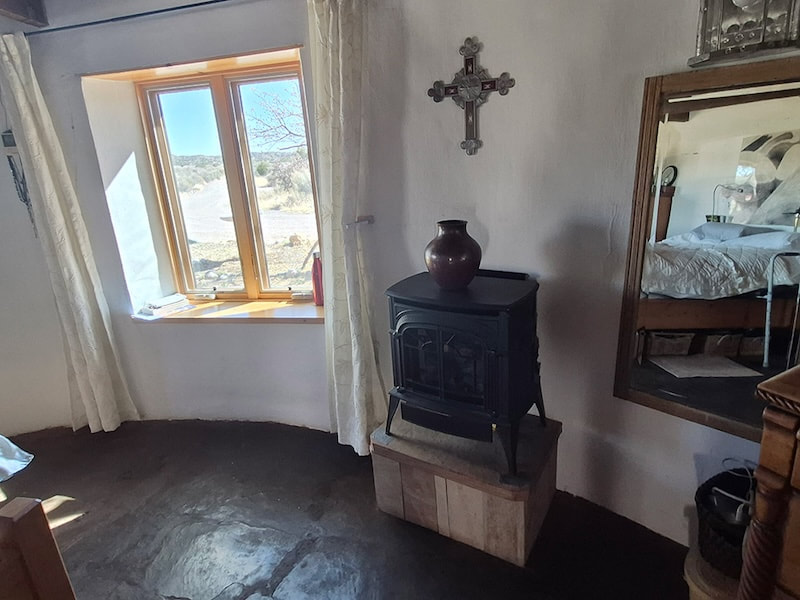 “I built and made a lot of the adobes for this room. It's interesting living in a round room, but if you have little things on the back side of a drawer and you drop things, you have to go underneath to retrieve them. There are people who make furniture that will conform to the round shape.” Image credit: Jessica Rath. Adobe buildings can be found almost anywhere in the world, I learned. Because I had mentioned that I grew up in Germany, Quentin asked me to guess how many adobe homes might be found in Germany? I was certain there were none, that I had never seen any. Well. I soon found out that I was dead wrong. “One day I was at a conference in former East Berlin,” Quentin told me. “This was around 2000, not too long after the wall had come down, at a big conference with stadium seating and about 400 people. And there's a young man up on the podium, and he says, ‘We have discovered that there are about 50,000 earthen homes in Germany.’ Next, this stately gentleman stands up with a blue suit and rimless glasses and thinning white hair, and he said, ‘Pardon me, there are 2 million earthen homes in central Germany alone.’ What do you say?” Well, to say I was surprised is putting it mildly… Frankly, I couldn’t believe it. I had never seen anything resembling an adobe building in Germany. Quentin resumed: “In Thuringia, one of the German states, there are many adobe houses now. Sometimes the actual structure of the house is half timbers, where they put up a frame of timbers, and the adobe bricks are only the infill. They tend to use adobe more often than they use stone for the infill.” Of course, now I recognized them! In German they're called Fachwerk houses. One can find them all over Germany, in smaller towns and rural areas. I had no idea they were built with adobe! “In the US, we call this half timber construction,” Quentin confirmed. “If it's true half timber, they build the house with a timber frame, and many of the elements will be vertical, but sometimes you have one that's at an angle, so it'll form a triangle and then the adobe goes in between. Sometimes they put small stones in between, but they're put together not with cement mortar, but with a clay based mud mortar. Lehm is the word for clay. So Lehm Bau, I believe, is a clay house.” Absolutely, Lehm is the German word for clay. And not only Germany, but England, France, Norway, and many other European countries built houses with adobe. I grew up there, and didn’t know! My ignorance was so profound that I asked Quentin whether he makes the adobe bricks which he needs when he builds a house? But he was patient with me and explained how it works. “I made a few of the adobes for this house. Four of the rooms were already there, and then we added a utility room at the back and a bedroom over here. I had a tractor, and I pulled a trailer with a big steel drum on it, and my son and I would fill it with dirt and water, and mix it up. And then either that evening or the next day, while he would drive the tractor forward, I'd open a little gate on the back, and it would spill out the mud and fill the forms that I had. I could make 90 bricks at a time. We'd let them sit for most of the day, and then lift the forms off, and there were our bricks, and then they just had to sit there till they were ready to use. So that's what's nice about adobe: you can make your own building materials but it takes time and is hard work!” Clearly, if one wanted to build houses, one would have to find somebody who made and sold adobe bricks. Sure enough, at the intersection of highway 554 and 84 Quentin saw a little sign that said ‘Adobes for Sale’. It was a father-and-son enterprise– Andy Trujillo was the son. They made adobe bricks, and could deliver 500 a day. That was exactly the number of bricks that Quentin and his two co-workers could use in a day to build a house. “That house we built in 1978 was passive solar, and we got an award for it. We got the Presidential Residential Passive Solar award. The award was $6,000 just for the design, and you got a second award of another $6,000 if you built the house. Robert Nicolais from El Rito and Los Angeles was the designer.” Quentin continued: “At about this time, some people started producing adobe at a factory scale. There was one man, Dennis Duran, who was making adobes at what's now Ohkay Owingeh. We got the adobe bricks for several houses from him. A little later, Mel Medina in Alcalde started making adobes at a large scale, with a vast investment in equipment and land. When you put the adobes on the ground, they have to lie there for at least a week before they're ready to be picked up. You have to let them dry out. And he could produce 25,000 adobes a day. He called his business the Adobe Factory.” Next, we looked at some issues of Adobe Today, a magazine published by Joe Tibbetts. Quentin showed me the photograph of La Capilla De Todos Los Santos, the Chapel of All the Saints, in San Luis/Colorado. It looks Mexican or Peruvian and has many domes, built with adobe. “What's interesting here are the domes, where the big one comes down, there's a half dome here and a half dome there, and there are two more on the other side. Have you ever been to Istanbul?” Quentin asked. Yes, I have, but it’s a long time ago… “It’s similar, the dome comes down, but then it lands on other domes which land on more domes. This dome is huge, but it makes the space inside even bigger by these cascading smaller domes, and it gives you a very big space inside. How did people ever figure this out? It was built 1400 years ago. Quite often we don't give enough credit to the cultures of other times. When they started the building, they had to be clear over here and clear over there, and how they ever got all these other little domes on it and then get up to the big final dome. They had to do all kinds of calculations on the sizes of those domes and the curvature, and then the big dome goes on top. That's pretty amazing.” I remembered that I had heard that the way to build with mud actually came from the Middle East, and that the word adobe is actually an Arab word. Quentin confirmed this. “It’s dub, or sometimes it's tub, and every country in north-Africa has a slightly different word for it. And when you get to the Arabs, it starts sounding close to adobe. And once you get into Spain, it finally becomes adobe.” “The magazine came out for a good number of years,” Quentin went on. “It also talks about Hassan Fathy, who designed the mosque at Dar al-Islam.” Then we looked at a photo of the Great Mosque of Djenné in Mali, the largest adobe brick building in the world. “Let me show you on my computer where adobe's going now.” Quentin took me to another room. “Remember that I said that Mel Medina could lay down 25,000 adobe bricks a day on a sustained basis? One day my phone rang, and this young lady with a British accent said ‘we need 150 million adobe bricks.’ I said, ‘That's unprecedented’, and she wanted to know either how they could buy them, or how they could make them, or how they could have them made. 150 million bricks. It would take Mel Medina, who had declared to be the world's largest adobe making facility, 180 years to produce enough.“ “I had a feeling where this was coming from – it's Saudi Arabia, because they've got the money, and they've got the land, but they don’t have the water. Every adobe brick you make on the ground, in this simple way, takes about a gallon of water. So they're going to need 150 million gallons of water. So then the answer has come from India. They have come up with these machines that can put down in one day many times more than what Mel Medina does in a year, and I'm going to show this to you on the computer.” We looked at a website of an Indian company, SnPC, which sells brick-making machines that can produce 24,000 to 25,000 adobe bricks AN HOUR! Click on the link and take a look, it’s truly mind-boggling. But be warned, the website is poorly designed. The 150 million adobe bricks which somebody had asked Quentin about were indeed to be used in Saudi Arabia, for a huge tourism project in Diriyah. “The original capital was bombed by the Turks in World War One. Now they're going to rebuild the city, and it will offer luxury residences and hotels, Diriyah Gate.” The companies involved in this huge project invited Quentin twice, as a consultant and expert in adobe building. That was about ten years ago. He had a funny story about his visit: “There was a pile of dirt, and all of these people in their suits were standing around and wondering what to do. I got down on my knees and put it together to see if it would hold together, and I said, ‘Look, it'll make a brick.’ And everybody remembered that I was the guy that got down on his knees while everybody else was just standing there, looking around.” That’s so impressive; Quentin’s masterfulness in everything related to adobe building was in demand all over the world. I appreciate all that I’ve learned in the company of Quentin and Maria. Thank you for a delightful afternoon. The Dome at Los Silvestres. Video produced by Lori Faye Bock. On April 22 Indivisable Abiquiu-Youngsville had our first meeting. Twenty four committed, energized folks showed up. What is Indivisable? This is from their web page:
“Action by action, day by day, group by group, Indivisibles are remaking our democracy. Brought together by a practical guide to resist the Trump agenda, Indivisible is a movement of thousands of group leaders and more than a million members taking regular, iterative, and increasingly complex actions to resist the GOPs agenda, elect local champions, and fight for progressive policies. They make calls. They show up. They speak with their neighbors. They organize. And through that work, they’ve built hundreds of mini-movements in support of their local values. And now, after practice, training, and repetition, they’ve built lasting power on their home turf and a massive, collective political muscle ready to be exercised each and every day in every corner of the country. Our Vision: A real democracy - of, by and for the people” Stay tuned for information on our next meeting. Join us on Facebook: Abiquiu-Youngsville Indivisible Group Courtesy of The Los Alamos Reporter
NMSP NEWS RELEASE On April 20, 2025, the New Mexico State Police Investigations Bureau was requested to investigate the off-duty death of Rio Arriba County Sheriff Billy Merrifield at 4759A NM Highway 96 in Abiquiu, NM. Investigations Bureau agents learned through interviews that on April 20, 2025, at approximately 3:00 a.m., a friend of Sheriff Merrifield received a phone call from a woman who stated she was with Sheriff Merrifield, and they were involved in a minor crash in his government issued patrol vehicle while he was off-duty. According to the friend, he located Sheriff Merrifield’s patrol unit approximately half a mile from his residence. When the friend spoke to him, Sheriff Merrifield stated he was OK. The patrol vehicle and Sheriff Merrifield were taken back to his residence. After they arrived at the residence, Sheriff Merrifield’s friend and the woman left the residence, leaving Sheriff Merrifield in his patrol vehicle. The friend told investigators that later that morning, around 10:00 a.m., after several unsuccessful phone call attempts, he went to Sheriff Merrifield’s house to check on him. When he arrived, he found Sheriff Merrifield unresponsive in his patrol unit. He called 911 and began CPR until paramedics arrived on scene and took over lifesaving efforts, which were unsuccessful. Sheriff Merrifield was pronounced deceased at the scene by the Office of the Medical Investigator. The Investigations Bureau continues to work to corroborate all the information received from the witnesses in this investigation. An autopsy was performed on Monday, April 21, 2025. The cause of death remains under investigation and autopsy results are pending. The possibility of the Sheriff being under the influence of an intoxicating liquor or drug is being investigated. This incident remains under investigation by the New Mexico State Police Investigations Bureau. |
Submit your ideas for local feature articles
Profiles Gardening Recipes Observations Birding Essays Hiking AuthorsYou! Archives
September 2025
Categories
All
|
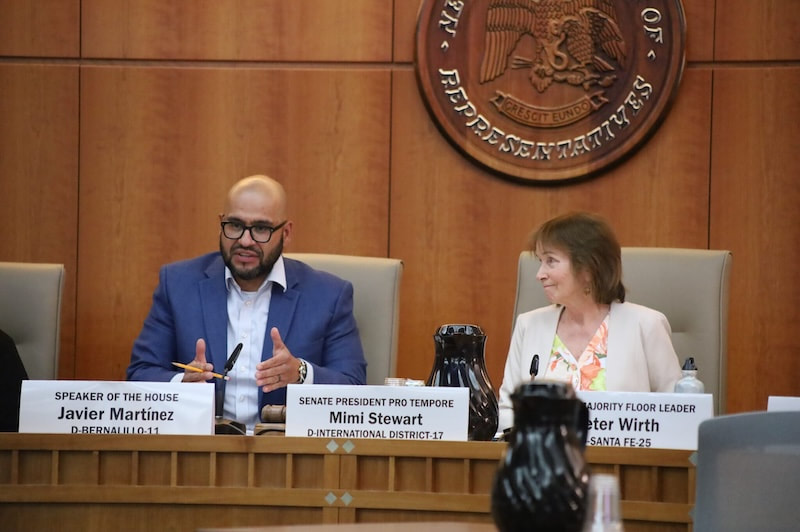
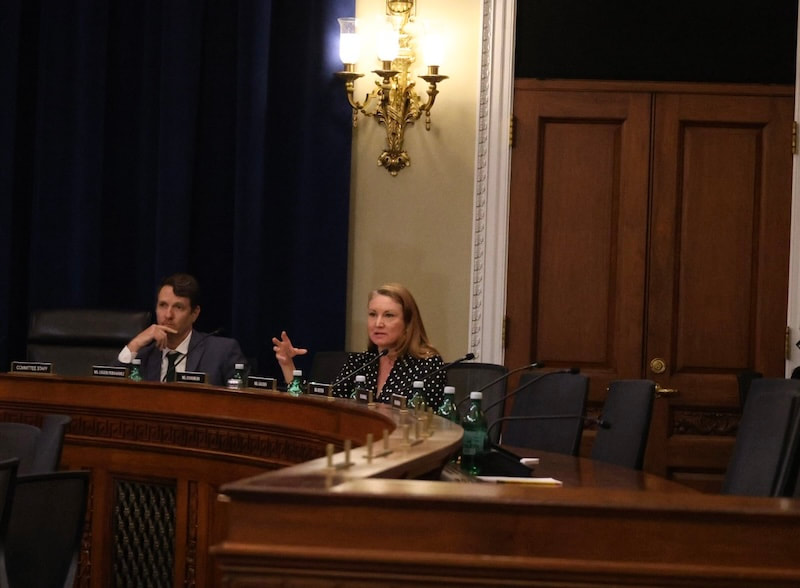
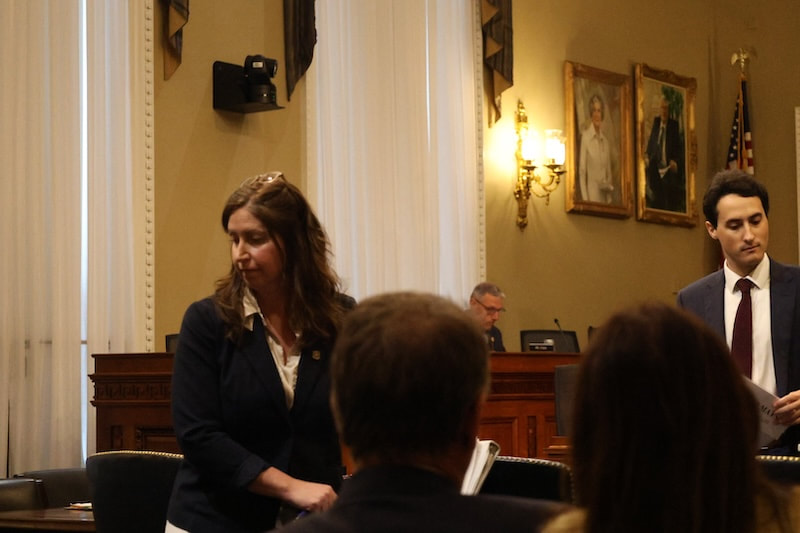
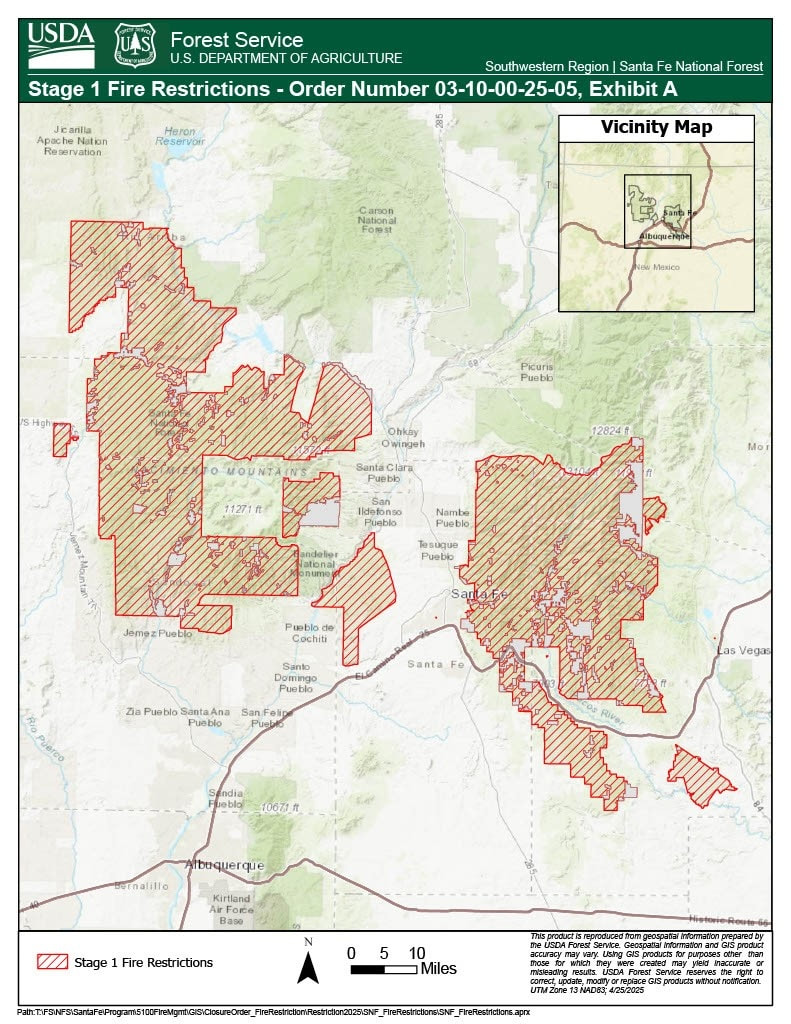


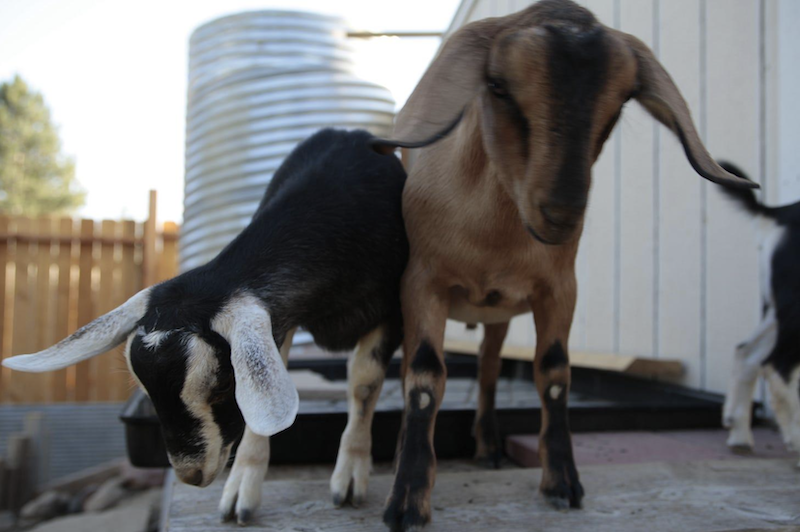
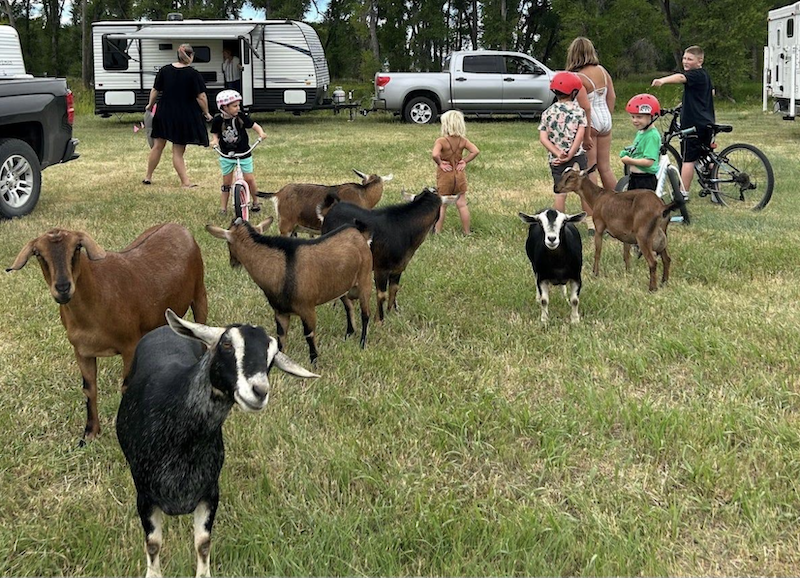
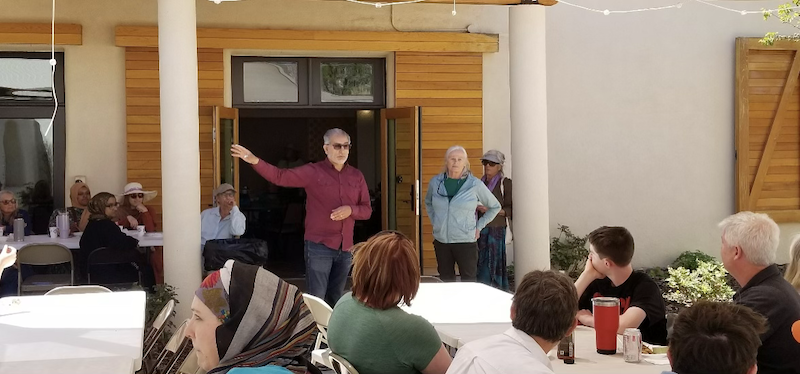
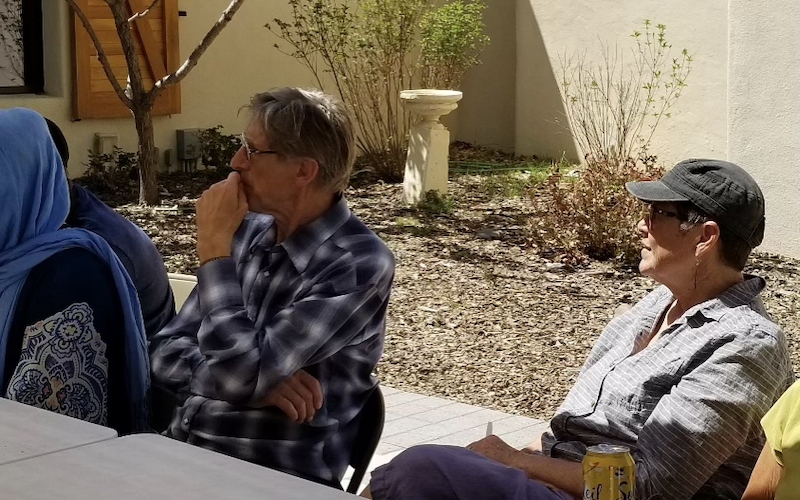
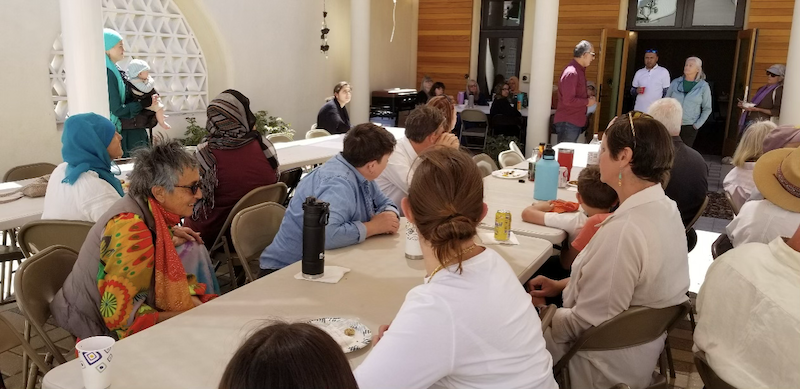
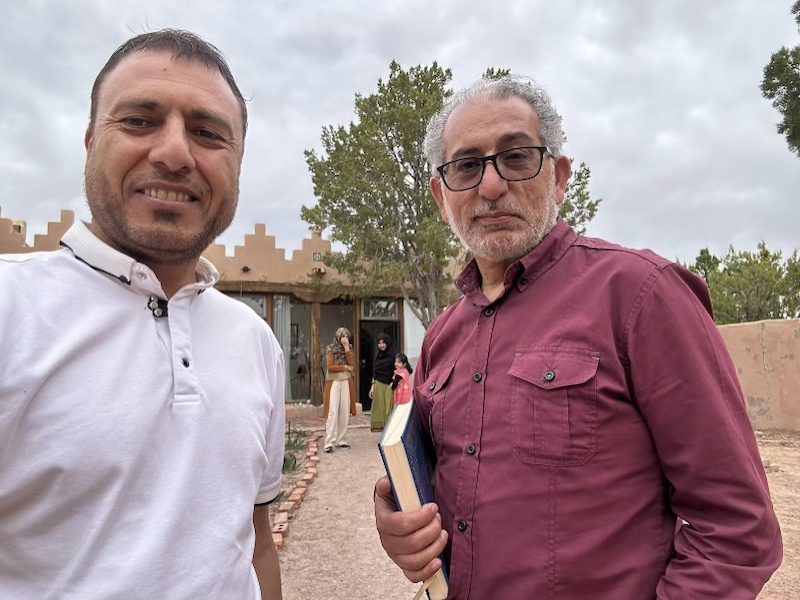
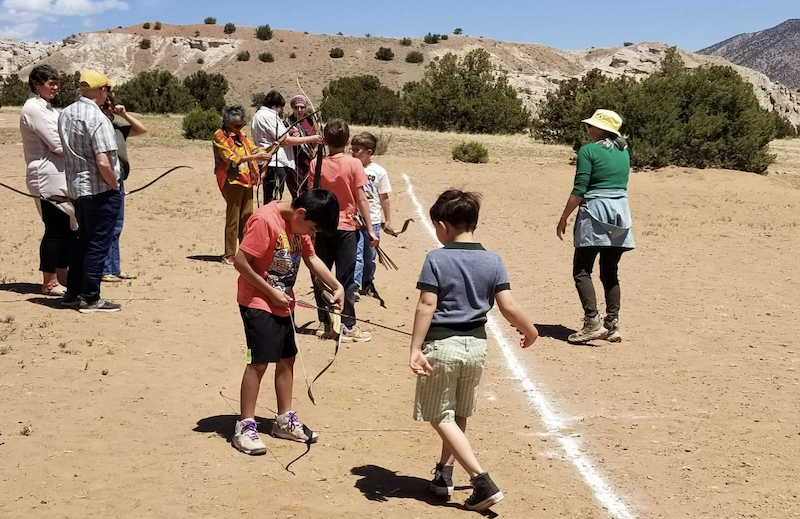
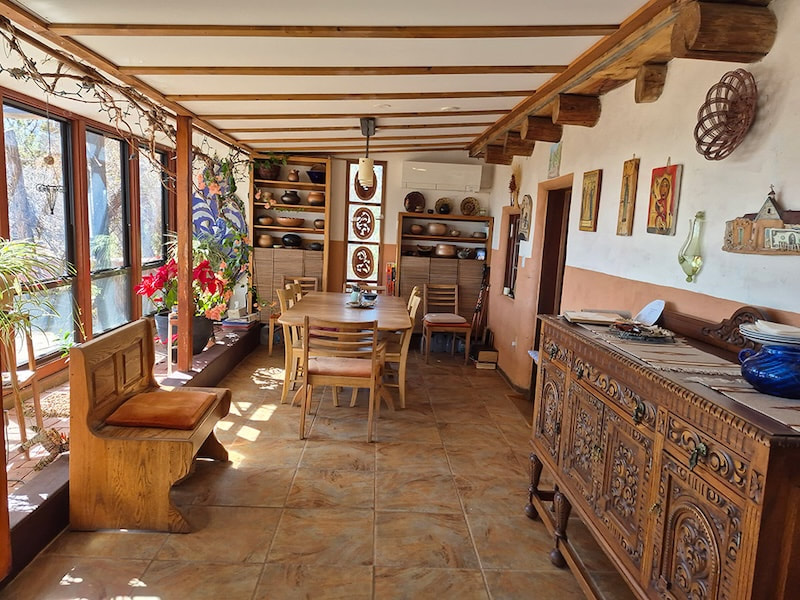
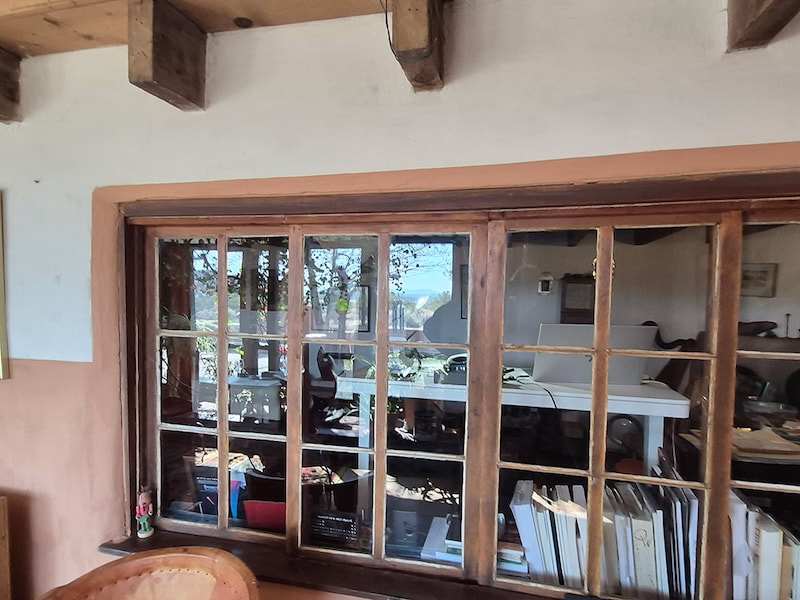
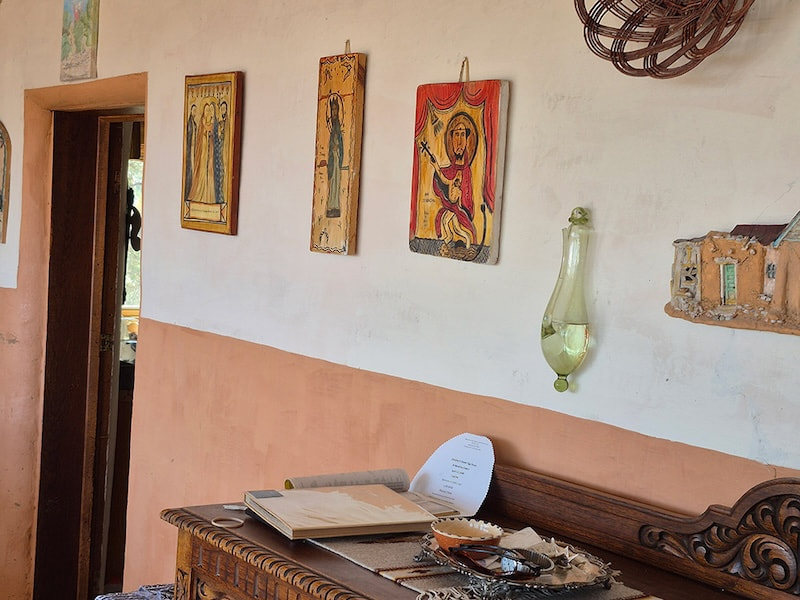
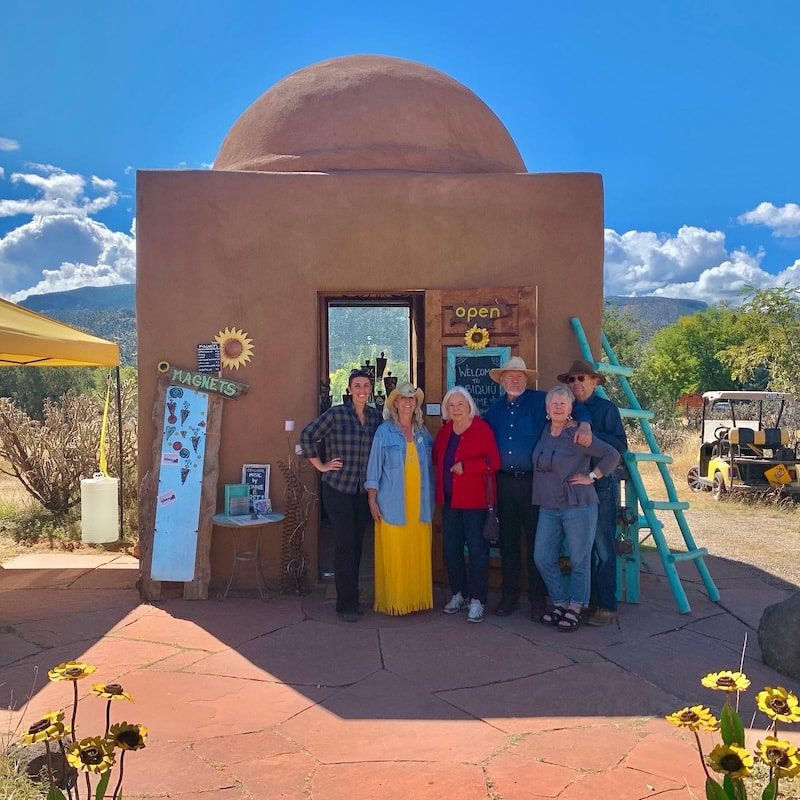
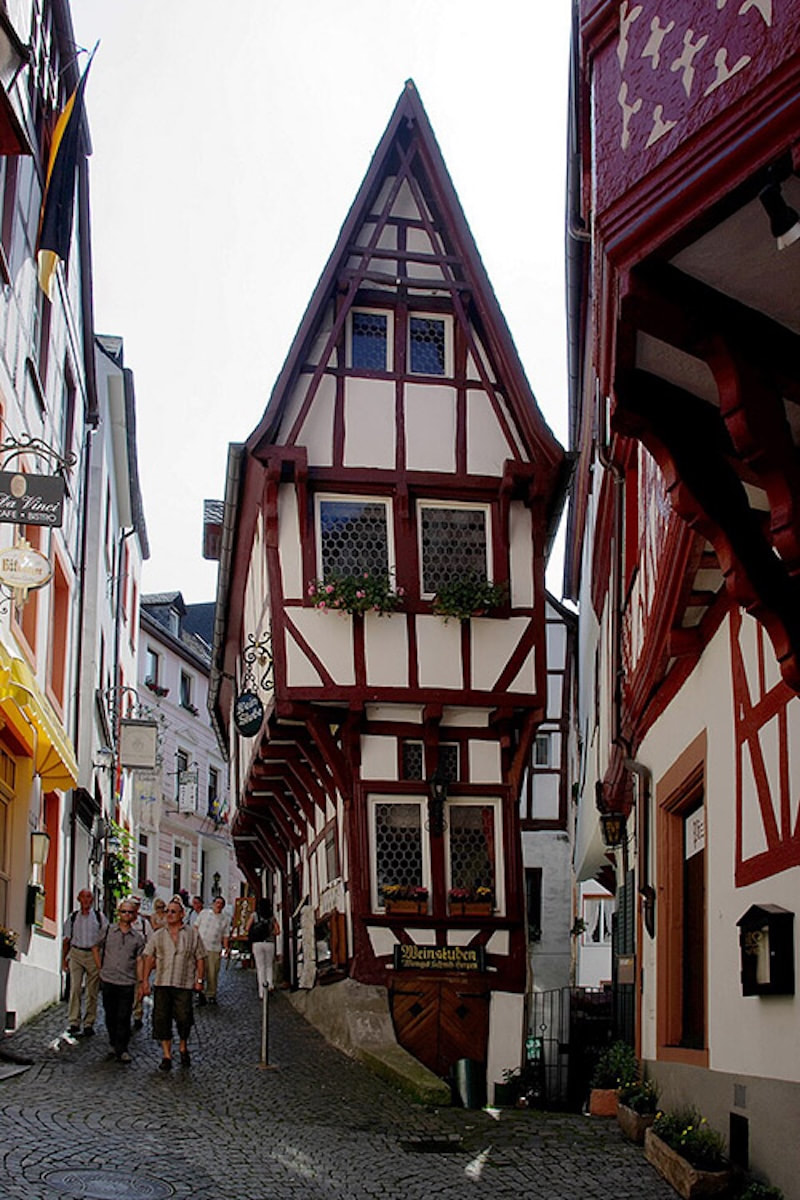
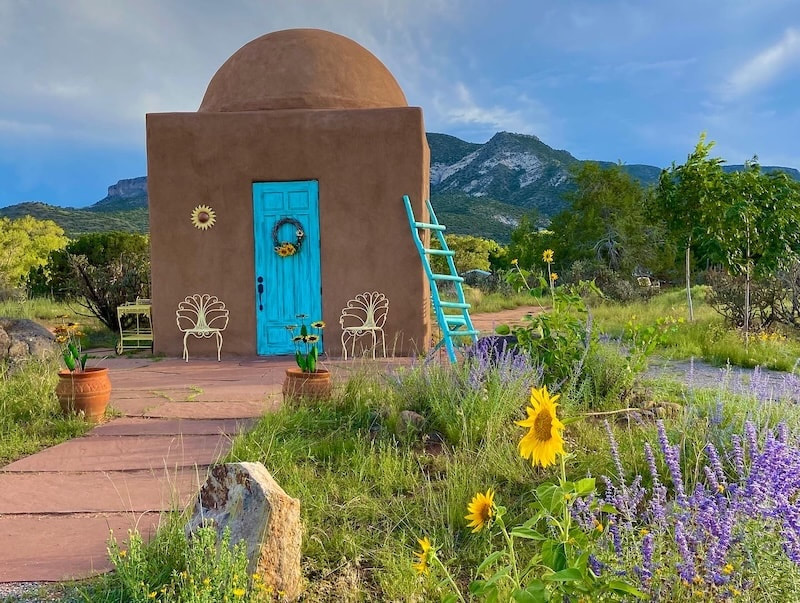
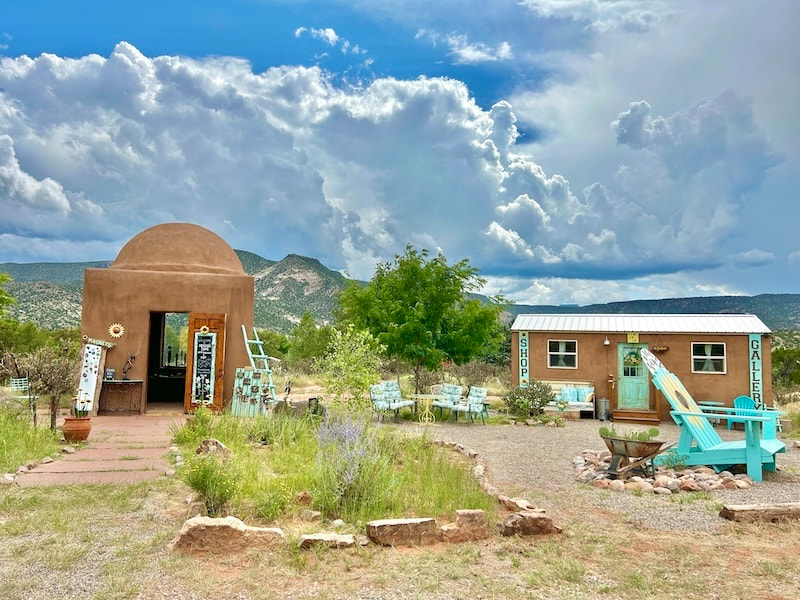

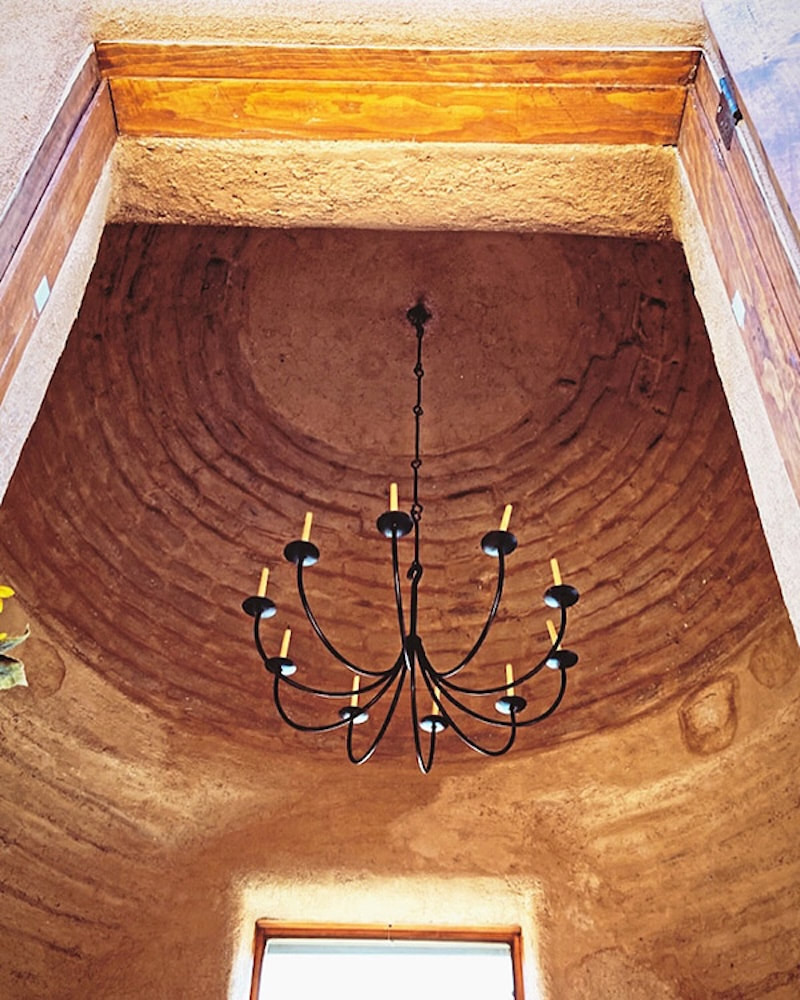
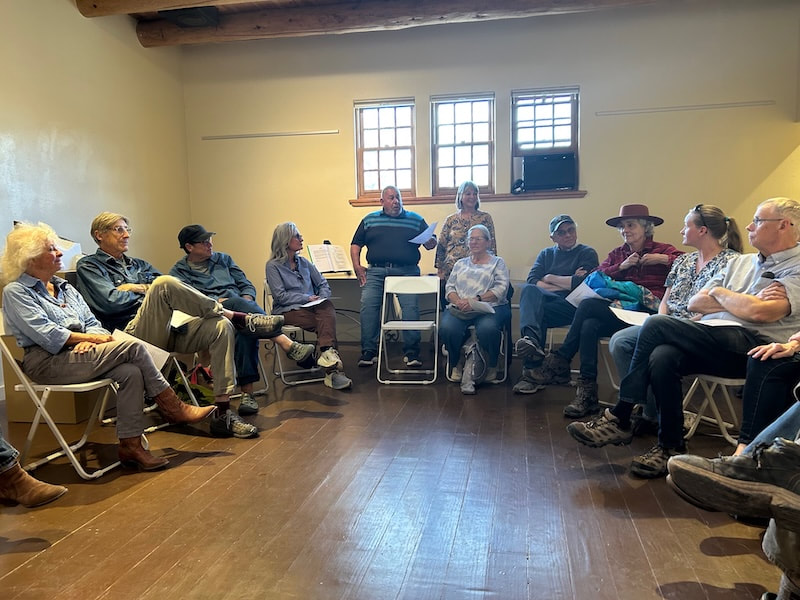

 RSS Feed
RSS Feed